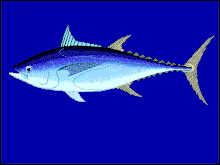Australian blacktip shark
| Australian blacktip shark | |
|---|---|

| |
| Scientific classification | |
| Domain: | Eukaryota |
| Kingdom: | Animalia |
| Phylum: | Chordata |
| Class: | Chondrichthyes |
| Subclass: | Elasmobranchii |
| Subdivision: | Selachimorpha |
| Order: | Carcharhiniformes |
| Family: | Carcharhinidae |
| Genus: | Carcharhinus |
| Species: | C. tilstoni
|
| Binomial name | |
| Carcharhinus tilstoni (Whitley, 1950)
| |

| |
| Range of the Australian blacktip shark[2] | |
| Synonyms | |
|
Galeolamna pleurotaenia tilstoni Whitley, 1950 | |
The Australian blacktip shark (Carcharhinus tilstoni) is a
Primarily
Taxonomy and phylogeny
The Australian blacktip shark was described by Australian
After Whitley's initial description, C. tilstoni was generally regarded as synonymous with C. limbatus, the
Description

Physically, the Australian blacktip shark can only reliably be distinguished from the common blacktip shark by the number of vertebrae (174–182 total, 84–91 before the tail in C. tilstoni, 182–203 total, 94–102 before the tail in C. limbatus). It has a moderately robust, spindle-shaped body and a long, pointed snout. The anterior rims of the nostrils are slightly enlarged into low triangular flaps. The large, circular eyes are equipped with nictitating membranes. The furrows at the corners of the mouth are barely evident. There are 32–35 upper and 29–31 lower tooth rows; each upper tooth has a slender, upright cusp and fine serrations that become coarser near the base, while the lower teeth are narrower and more finely serrated. The five pairs of gill slits are long.[9][10]
The long and narrow
Distribution and habitat
Inhabiting the continental shelf, the Australian blacktip shark is found from Thevenard Island in Western Australia to Sydney in New South Wales.[2][10] Within its range, it co-occurs with the common blacktip shark; the ratio between C. limbatus and C. tilstoni was once thought to be 1:300, but recent genetic studies have found it to be closer to 50:50.[12] This species has been reported from the intertidal zone to a depth of 150 m (490 ft); larger sharks tend to occur in deeper water.[1] Though it occupies the entire water column, it is most common close to the surface or in midwater.[10] Genetic data suggest Australian blacktip sharks across northern Australia are all members of a single population.[13] Tagging studies have found this species mostly moves only short distances along the coastline and rarely enters offshore waters. However, some individuals have been recorded traveling longer distances, up to 1,348 km (838 mi).[14][15]
Biology and ecology

The Australian blacktip shark is known to form large groups, segregated by size and sex.
Like other requiem sharks, the Australian blacktip shark is
Human interactions
Along with the spottail shark, the Australian blacktip shark is one of the most economically important sharks off northern Australia. It was historically fished for its meat and
Since 1980, the Australian blacktip shark has also been targeted by Australian commercial gillnetters and
References
- ^ . Retrieved 19 November 2021.
- ^ PMID 21039498.
- ^ Whitley, G. P. (July 7, 1950). "A new shark from north-western Australia". Western Australian Naturalist. 2 (5): 100–105.
- ^ Froese, R.; Pauly, S.; eds. (2011). "Carcharhinus tilstoni" in FishBase. December 2011 version.
- S2CID 54989299.
- .
- ^ doi:10.1071/MF10159.
- PMID 21129490.
- ^ ISBN 978-3-89937-132-1.
- ^ ISBN 978-0-674-03411-2.
- ISBN 978-92-5-104052-2.
- S2CID 85574058.
- .
- doi:10.1071/MF98158.
- ^ ISBN 978-92-5-104291-5.
- .
- ^ S2CID 22998036.
- ^ .
- S2CID 3129825.
- S2CID 944343. Archived from the original(PDF) on April 24, 2012. Retrieved December 16, 2011.
- ^ Simpfendorfer, C.A. (1993). "Pandarid copepods parasitic on sharks from north Queensland waters". Memoirs of the Queensland Museum. 33 (1): 290.
- .
- S2CID 14083730. Archived from the original(PDF) on 2014-03-22. Retrieved 2013-04-15.

